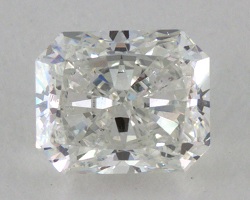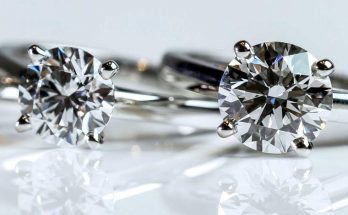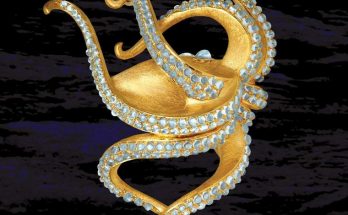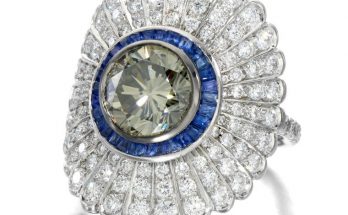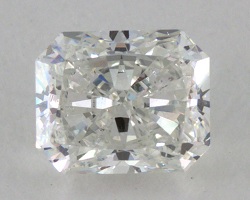
Rectangular radiant cut diamond…
The radiant cut can be thought of as a hybrid which combines advantages of the three most popular diamond shapes. It has the fire and brilliance of the round cut brilliant, the clipped corners of the wonderful Asscher cut and the “openness” of the emerald cut. With a unique embodiment of different traits, it appeals to people looking for a modern fusion look.
Interestingly from a bureaucratic point of view, the radiant cut does not exist. I know it might sound strange at first, but that is the truth when we go down to the technicalities.
Did you know that major gemological institutes like the GIA (Gemological Institute of America) do not issue grading certificates calling these diamonds “radiant cuts”?
Instead, they term it as a “cut corner rectangular modified brilliant” or “cut corner square modified brilliant” depending on the diamond’s outline. According to this terminology, a radiant cut diamond could be defined as a princess cut diamond with its corners cut off.
The real differences between a princess cut and a radiant cut lie on the internal facet structures and the 4 truncated corners. In terms of optical performance, the princess cut has a much more linear character in the way it reflects light. On the other hand, the radiant cut diamond present a series of concentric circles radiating from the center.
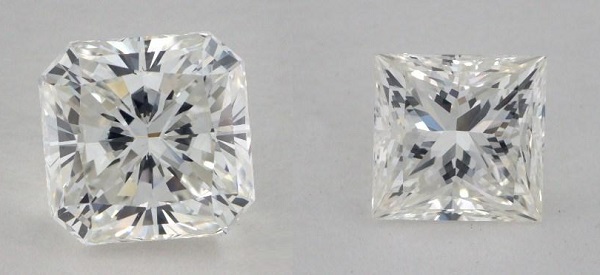
A comparison of the radiant cut (left) vs. the princess cut (right).
The radiating concentric rings gave birth to its trade name.
Recommended Proportions For Radiant Cut Diamonds
| Excellent | Very Good | Good | Fair/Poor | |
|---|---|---|---|---|
| Table % | 60% – 66% | 58% – 69% | 57% – 72% | Outside Ranges |
| Depth % | 59% – 65% | 57% – 67% | 56% – 70% | Outside Ranges |
| Polish/Symmetry | Excellent – Very Good | Good | Outside Ranges | |
| Length to Width | 1.00 – 1.20 | 1.21 – 1.25 | 1.26 – 1.35 | Outside Ranges |
| Girdle Thickness | Thin – Thick | V. Thin – V. Thick | Outside Ranges | |
| Culet Size | None | Very Small | Small | Outside Ranges |
* Note: The recommended table of proportions should be used as a reference for filtering your initial diamond selections. Numbers by themselves can be somewhat misleading because fancy shapes can take on various appearances in real life. When buying radiants, you really need to consider photography/videography and include ASET analysis as part of your decision making process.
Tips to Choosing a Radiant Cut Diamond
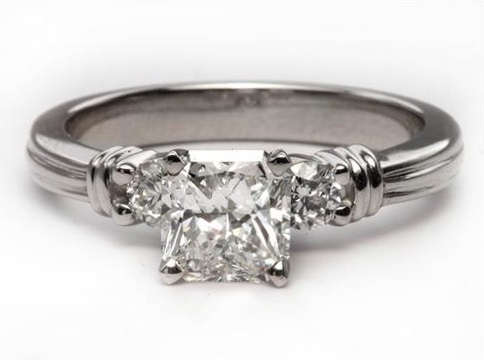
A beautiful radiant cut diamond set between 2 round brilliants.
Thanks to the radiant’s forgiving cut which combines the best features of the various shapes, it is able to make much more of a lesser quality rough stone. This cutting style hides flaws and color tints by making use of the excellent brilliance and scintillation properties it displays. For that reason, the minimum requirements for the “four C’s” have more room for leeway as compared to the other shapes.
In general, here’s what I would recommend to people who are interested in buying a radiant cut diamond. For people who are sensitive to color, a minimum color grade of “G” is recommended. In terms of clarity, I would stick with a minimum rating of “SI1”. I don’t recommend buying blind but if you have no other methods to shop for a diamond, I would shortlist radiants with a depth percentage between 60% and 69% and a table percentage between 59% and 67%.
That will provide a good base to start filtering choices and eliminating possible options. Also, under no circumstances should you buy a diamond without a reliable lab report/certificate that recognizes its material properties and values.
Moving on, did you know there are 2 general types of shapes (square & rectangle) in which radiant diamonds are often cut into? We will explore the differences between these 2 shapes on the next page…
>>
